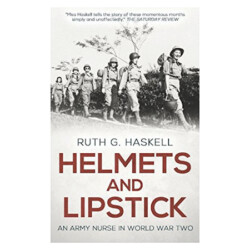The Women Who Flew During World War Two
During World War II, a group of extraordinary women, known as the Women Airforce Service Pilots (WASP), made significant contributions to the war effort and paved the way for gender equality in aviation. Led by influential figures such as Jacqueline Cochran and Nancy Harkness Love, the WASP played a crucial role in the history of women in aviation.

The inception of the WASP can be traced back to the Women’s Auxiliary Ferrying Squadron (WAFS, created by Love) and the Women’s Flying Training Detachment (WFTD, created by Cochran). In August 1943, these two groups were combined to form the Women Airforce Service Pilots, with Jacqueline Cochran as the director of WASP and its training division, and Nancy Harkness Love as director of the ferrying division.

Jacqueline Cochran, a renowned aviator and businesswoman, was the driving force behind the creation of the WASP. With her extensive flying experience and determination, she lobbied the military to allow women to serve as pilots in non-combat roles, freeing up male pilots for combat duty. Nancy Harkness Love, also an experienced pilot who had established the Women’s Auxiliary Ferrying Squadron, played a crucial role in recruiting and training women pilots for the war effort.

To join the WASP, applicants had to meet specific requirements. They had to be US citizens, at least 18 years old, hold a pilot’s license, have a minimum of 200 flight hours, and pass a rigorous physical examination. Despite the challenges and gender biases prevalent in the aviation industry at the time, many women met these criteria and eagerly volunteered for duty.

Once accepted into the program, the women underwent training at Avenger Field in Sweetwater, Texas. The intense training program included over 200 hours of flight training in various military aircraft, navigation, instruments, aerobatics, and emergency procedures. The women were also taught military protocols, radio procedures, and aircraft mechanics to prepare them for their duties as pilots.

Upon graduation, the WASPs were assigned a variety of essential duties. They ferried military aircraft from factories to airbases, towed targets for anti-aircraft artillery practice, and conducted test flights on repaired aircraft. The women piloted a wide range of planes, from small trainers to heavy bombers, with precision and skill, proving their capabilities as competent aviators.

Despite their integral role in the war effort, the WASPs faced challenges and discrimination. They were classified as civilian pilots and did not receive military benefits or recognition until decades later. Tragically, 38 WASPs lost their lives during their service, highlighting the risks they undertook in their commitment to the war effort.

In 1977, over 30 years after the end of World War II, the WASPs were finally granted veteran status by the US government, acknowledging their bravery and contributions to the war. Their legacy lives on as a testament to the resilience and determination of women in aviation, inspiring future generations of female pilots to pursue their dreams and break barriers in a male-dominated field.

The women WASPs of World War II, led by trailblazers like Jacqueline Cochran and Nancy Harkness Love, defied societal norms and proved their mettle as skilled aviators, leaving an indelible mark in the history of aviation. Their courage, dedication, and unwavering commitment to serving their country paved the way for greater opportunities for women in the field of aviation, shaping the future of flight and inspiring generations to come.
To learn more about these amazing women, visit the websites below:
Recommended Products:











